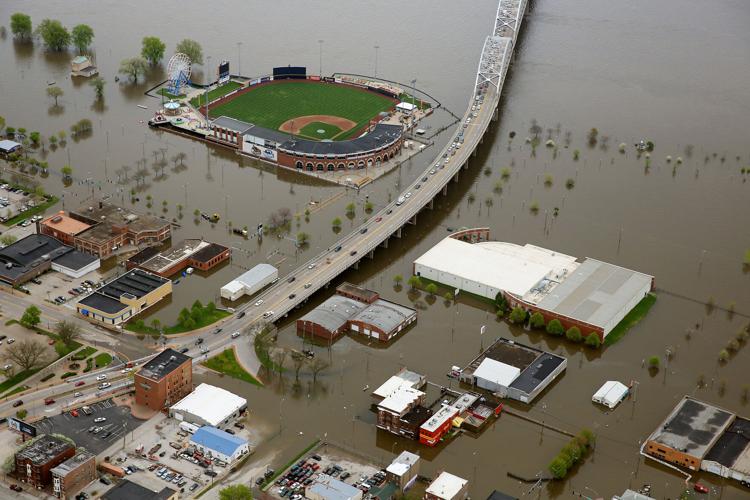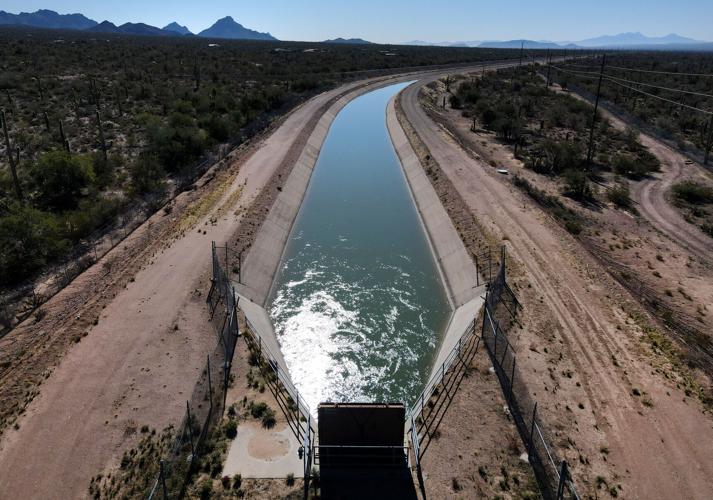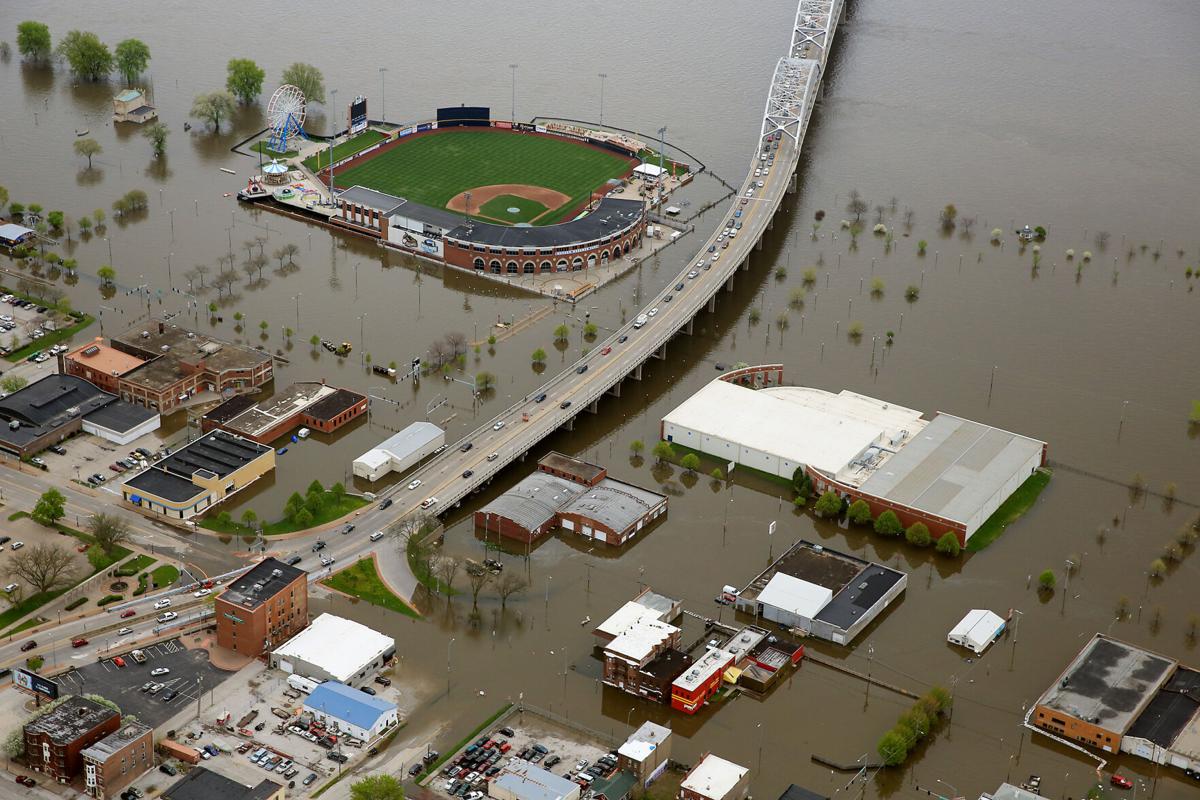In the West, the longstanding tradition is that when you don’t have enough water to serve your city or state, you take it from somewhere else.
Arizona followed that course in 1968, when after 40 years of lobbying, it bagged congressional approval of what turned out to be the $4 billion, 336-mile Central Arizona Project, importing drinking and irrigation supplies from the seven-state Colorado River Basin. It proved expensive enough that many observers thought this would be America’s last big water project.
Now, with a water crisis staring it in the face, Arizona’s Legislature is about to go down that path again — by creating a new fund with a starting cost of $160 million to import more water, possibly from as far as the Mississippi River.
In party-line votes last week, the Republican-led Senate and House appropriations committees adopted a proposal to spend that in “seed money” towards future projects that could include such pipelines.
Republicans said spending the money would prove the state’s foresight on water issues. Democrats said the state needs to clean up its water mess at home first.
“If the budget gets pushed through that we are proposing, you will see a substantial amount of money set aside for finding and refining water sources across Arizona and beyond,” House Speaker Russell Bowers, a Mesa Republican, at a recent Arizona Capitol Times-sponsored forum on water issues.
The Legislature also voted to support a resolution asking Congress to pay for a federal study of the feasibility of building one such project.
It’s a pipeline, nearly 1,000 miles long, to ship Mississippi River floodwaters from Davenport, Iowa, to Rock Springs, Wyoming, at the Green River, a major Colorado River tributary. The resolution passed both houses, with solid bipartisan support.
Arizona growth requires water
This proposal arrives just as the Colorado River and its reservoirs near crisis stage — a fact mentioned repeatedly by supporters and opponents of the new spending.
The most recent federal forecast, from mid-May, predicts Lake Mead will fall by December 2021 to 1,065 feet. That’s nearly 10 feet below the level requiring major cuts in CAP deliveries to Central Arizona farmers and nearly 20 feet lower than in December 2020.
This U.S. Bureau of Reclamation forecast also predicts Mead will drop by the end of 2022 to 1,048 feet. That’s only about 4 feet above the level that would for the first time mandate cuts in Colorado River deliveries to California, and deeper cuts to Arizona, affecting tribes and some Phoenix-area cities.
But growth is the ultimate issue, said Senate Appropriations Committee Chairman David Gowan. He spoke shortly before the committee voted 6-4 Tuesday to recommend passage of the $160 million, as part of a larger package of water-related spending proposals.
“It’s not just the hearsay out there of going to the Mississippi and such, but trying to figure out how to get water here to this great state that continues to grow and grow. As we get more people we need more water,” said Gowan, a Sierra Vista Republican. “This is a significant amount of money that could go toward that effort and make sure that we can survive in the future in this great state that we have.”
Sen. Lisa Otondo, of Yuma, was one of many Democrats who pointed to the Legislature’s repeated unwillingness to tackle several groundwater-related bills aimed at getting a handle on unregulated pumping in rural areas. Most didn’t even get a hearing in 2020 or 2021. One would require metering of water use in rural areas. Another would give counties some power to regulate rural water use.
“There are many things we could have done in this Legislature, and if anybody’s seen the recent reports coming out, then you can take into consideration how serious this water situation in Arizona is,” Otondo said.
“I believe we were the great caretakers of water, but we’ve buried our heads in the sand for years and we’re way behind the eight ball.”
Ingredients for a partisan board
The $160 million package, called a Drought Mitigation Revolving Fund, doesn’t mention a specific project.
But so far, the debate has been dominated by two, highly expensive and highly controversial ideas: Importing water via pipeline from the Mississippi or Missouri rivers; or building a desalination plant on the Gulf of California in collaboration with Mexico, or on the Pacific Coast in collaboration with California.
The package would establish a seven-member Drought Mitigation Board, to select which projects get funding, without full legislative approval.
Six members, spread among different counties, would be appointed to five-year terms by the governor and legislative leaders. They’d be required to have “a background in water issues.” The Arizona Department of Water Resources director would be chairman.

Construction of the CAP canal — shown here in Avra Valley northwest of Tucson — was approved by Congress in 1968. Now, with a water crisis staring it in the face, Arizona's Legislature is seeking a federal study on whether other river water could be imported to the state through a new pipeline from as far away as the Mississippi River.
“This fund is intended to set aside money for potential future state involvement in these projects that we certainly expect will be needed in the future,” said C.J. Karamargin, a spokesman for Republican Gov. Doug Ducey, adding that a desalination plant or a pipeline from the Midwest would fit criteria state officials envision for these projects. “It is important to keep our options open.”
Critics such as the Sierra Club’s Sandy Bahr and Democratic Sen. Kirsten Engel of Tucson say the proposal suffers from a lack of public accountability. They say there’s a lack of standards for determining which projects deserve funding.
Because board members are appointed by the governor and legislative leaders, it appears this will be a partisan board when water should be a nonpartisan issue, Engel said.
“What is the accountability for what the fund is used for? Who are they responding to?” Engel said.
When the state awards land conservation projects from the Arizona Heritage Fund, by contrast, “you have to have every I dotted and T crossed,” Bahr said. In this case, “they’re giving them a blank check.”
‘People thought that was crazy’
The resolution calling for the Mississippi River study was proposed by Rep. Tim Dunn, a Yuma Republican and a farmer. It has strong backing from Bowers and will be sent to officials of riverfront states and Arizona’s congressional delegation.
Dunn, who chairs the House Land, Agriculture and Rural Affairs Committee, said he got the idea from representatives of the Arizona Association of Conservation Districts, which carries out major soil and water conservation projects.
Dunn recalled when the CAP was first proposed in the mid-20th century, “”people thought that was crazy,” but “Arizona would not be Arizona without that forward thinking, taking those risks, looking at those risks ... 25 to 30 years in the future.”
Calling the pipeline a “win-win”, Dunn pointed to the 2019 flooding in Davenport, Iowa, that caused more than $30 million worth of local damages and lost revenue to local businesses and government.
The river overtopped levees and stayed above flood level for three months, cresting at a record 22.7 feet in early May. Roads and many businesses were closed for days if not weeks.
Cities, towns and farms along the entire river and its tributaries in 13 states suffered $6.2 billion in damages during 2019 flooding, said the National Oceanic and Atmospheric Administration.
Dunn also pointed to flood damages suffered by his own brother, a farmer in Greenwood, Mississippi.
He sees this study as an ideal vehicle, given the Biden administration’s interest in infrastructure projects. Issues such as environmental effects and potential demand for the water could be thoroughly analyzed in a study, he said.
Dick Powell, a Casa Grande council member, was one of the first to push for the pipeline study. He was first moved to act on this issue a few years ago by his wife, as they watched floodwater roil the Mississippi, he recalled.
"She said, 'They've got too much water. Why don't we get some of their water?'" he said. "Each year gets a little bit worse. On both ends, we’re kind of challenged by the weather changes that have taken place."
As the Arizona Senate voted 23-7 to adopt the pipeline study resolution on May 11, Tucson Democratic Sen. Victoria Steele recalled she first thought, “’What a crazy, whacked out bill this is. I just thought we need to fix our own problems.
“But after talking to friends who remember how CAP seemed like a whacked out, crazy idea and it did happen and we are dependent on it in large part,” she changed her mind, Steele said. “The more I talk with experts in hydrology, the more convinced I am that this is an idea that deserves consideration and it’s not all that far-fetched.”
‘Very, very expensive’
There are many impediments to such a project, including cost, environmental impacts and who can afford this water, said Sarah Porter, director of Arizona State University’s Kyl Center for Water Policy.
“It is a very, very expensive project. It’s not clear who are the buyers of that extremely expensive water. One of the problems we always have in conversations like this is that the most affected sector is agriculture. None of this is a solution for agriculture — the water is going to be way too expensive to use for agriculture,” said Porter.
in 2012, the U.S. Bureau of Reclamation studied importing water from the Mississippi and Missouri rivers as part of a broader water study for the Colorado Basin. It concluded both projects could supply about 600,000 acre-feet of water a year — more than one-third of CAP’s annual supply.
But it said the Missouri River pipeline would cost $8.6 billion to build. The Mississippi River pipeline, which in the bureau’s study would start at Memphis, would cost $14.6 billion. The pipelines would cost over $2,000 an acre-foot to operate — more than 10 times the cost of delivering CAP to Arizona cities.
Both projects would take 30 years — five years to determine feasibility, 15 years to get permits, and 10 years to build, the bureau said.
ASU's Porter said a desalination plant is more realistic, something whose costs and benefits are already being scoped out a project "that has legs." It could bring in another 200,000 acre feet of water through an exchange in which Arizona gets more of California or Mexico's Colorado River supplies while the other parties get the desalinated seawater, she said.
But, "we shouldn’t be bringing in a new water supply, where there’s work to be done on getting a handle on groundwater," said Porter, whose center just published a scathing attack on the state's failure to manage groundwater pumping in the state's urban areas. 'Until we get our house in order, we shouldn’t be making big investments."
At the Arizona Capitol Times discussion, Engel called the pipeline unrealistic, unnecessary and outrageously expensive.
“We’ve gotta deal with the states in between who will want a cut of that water,” Engel said. “Rather than doing that, there are things right in front of us that we should be investing money in — helping local governments plan for our future. And part of that conversation should be planning for climate change.”
in an interview, Engel said she’s “absolutely worried” that big projects financed by the Drought Mitigation Fund could be used as an excuse not to tackle existing water problems.
“They’re dangling this kind of bright shiny penny of ‘let’s have this huge construction project. That’s our ticket to dealing with our water problems,’” she said.
House Appropriations Committee Chairwoman Regina Cobb, of Kingman, has sponsored many of the tough water bills that Democrats lament get routinely buried in committee. But she strongly supported the $160 million fund when the committee voted 7-6 to recommend approval Tuesday.
“It’s a long shot, but it is something that’s gotta be looked at. We can’t be just looking at the sources we have right now here,” Cobb said. “We’ve been talking about desalination, we’ve been talking about moving water for a long time. We haven’t put our money where our mouth is.”
And at the Capitol Times water forum, Bowers asked, “How many trillions, not billions, have we spent, rebuilding communities on the Eastern Seaboard, Southern coasts and along the Mississippi after floods and spectacular events, hundreds of billions just to have it happen again?
“We need to — we have to — look long term.”





